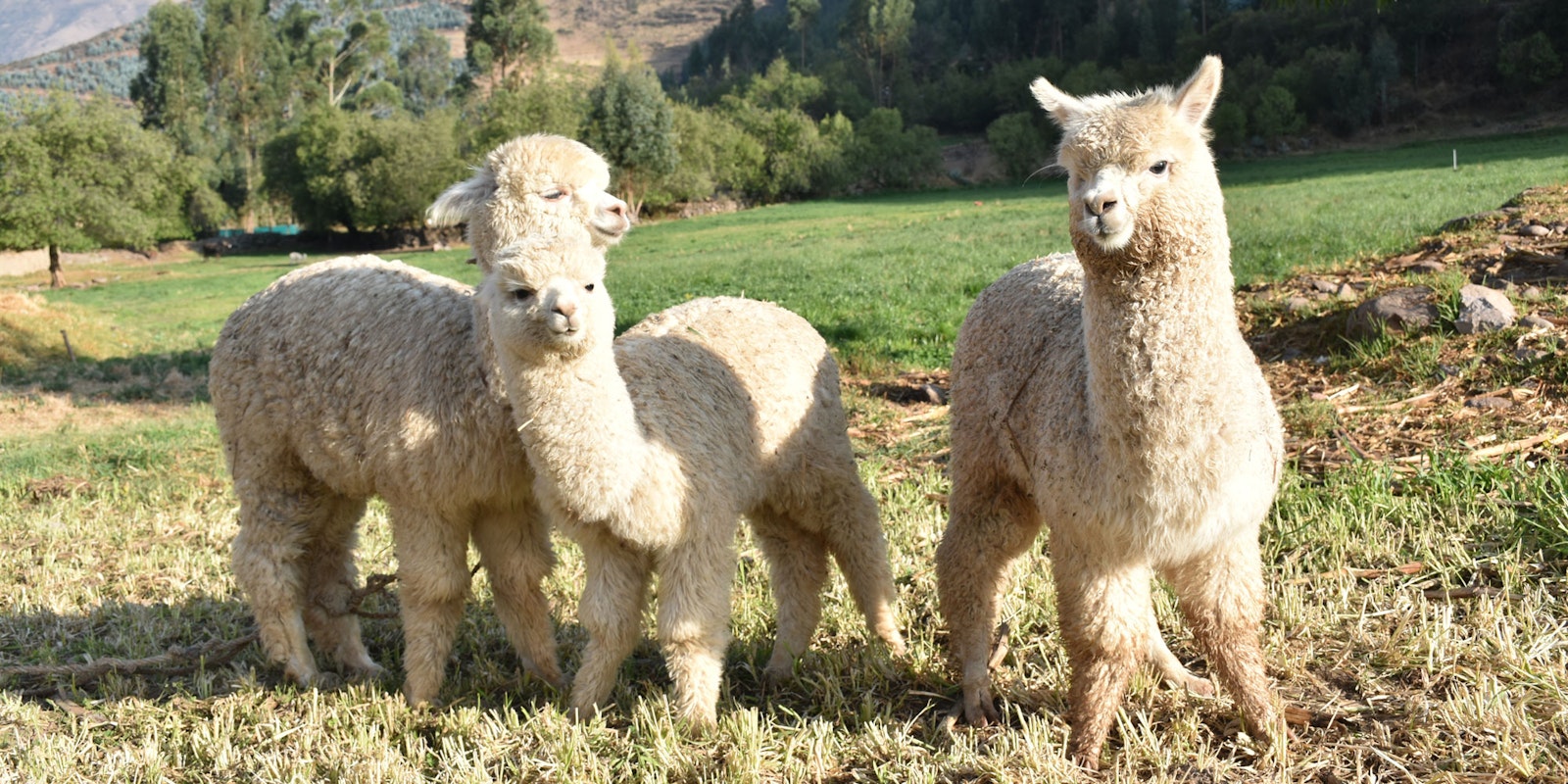If you've ever looked across a field and seen an animal that looks like a cross between a giraffe and a teddy bear, you've probably seen an alpaca: fluffy and sweet-faced, with unexpectedly long legs and necks. At first glance they don't look like much camels, the large, humpy beasts of burden that most of us picture when we think of crossing the desert. But alpacas are part of the camelid family, ruminants with two-toed, soft-padded feet. They're closely related to llamas, though much smaller, and you don't generally see alpacas as pack animals or livestock guardians in North America. When you find them at fiber festivals, they may seem standoffish and shy, and you may hear them gently humming if they feel stressed.
 Whitney Dorband of Mountain Sky Ranch in Berthoud, Colorado, holds a cria, or baby alpaca. Photo by Joe Coca.
Whitney Dorband of Mountain Sky Ranch in Berthoud, Colorado, holds a cria, or baby alpaca. Photo by Joe Coca.
Alpacas, llamas, and their wild ancestors originally come from the high Andes mountains, where they provide meat, leather, and fertilizer as well as fiber. In the United States, the primary product of most alpacas is more alpacas—many farmers have purchased alpaca breeding stock as an investment. Some people keep them as companion animals or as part of a rural lifestyle, but fiber production is far down the list for most alpaca owners. (Alpaca/vicuña hybrids called paco-vicuñas are an exception, with incredibly soft and precious fiber; see "Alpacas and Llamas and Paco-Vicuñas!" by Chris Switzer). Alpaca yarn is comparatively rare, in part because alpacas are tricky to shear. Small herds do not produce enough fiber for most conventional mills, especially in the extraordinary range of natural colors.
 Alpacas originate from the high Andes mountains of Peru, Bolivia, Ecuador, and Chile, where they are still raised in traditional farming. This alpaca has been hand-sheared, unlike many North American animals who are sheared using electric clippers. Photo by Akshay Chauhan
Alpacas originate from the high Andes mountains of Peru, Bolivia, Ecuador, and Chile, where they are still raised in traditional farming. This alpaca has been hand-sheared, unlike many North American animals who are sheared using electric clippers. Photo by Akshay Chauhan
Because alpaca yarn is not as common as sheep's wool yarn, knitters may be missing out on the charms of this natural fiber. The warmth, drape, and softness of alpaca can make for lovely scarves, shawls, and garments, and adding it to a blend with silk, wool, or other fibers can give you warmth, drape, and softness.
For the next two weeks we'll be taking a closer look at this underappreciated fiber. This week, certified wool sorter Jacqueline Harp explains what knitters can expect from knitting with alpaca yarn, whether from a larger yarn company or a little farmstand. South American camelid expert Chris Switzer provides a primer on the beasts. And I'm excited to share the Timberlane Cowl with you, a fun and easy-to-knit slipped-stitch pattern for a warm, colorful hug around the neck. I recently knitted two of them myself and found making them pretty habit-forming.
I hope you enjoy this exploration of our lesser-known fiber friends!

